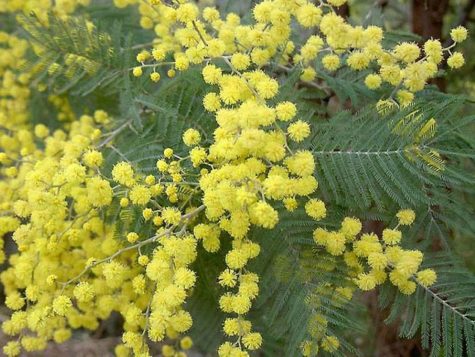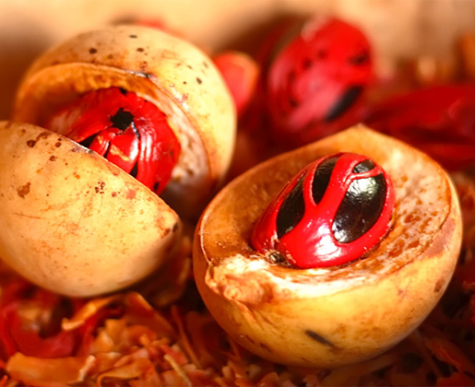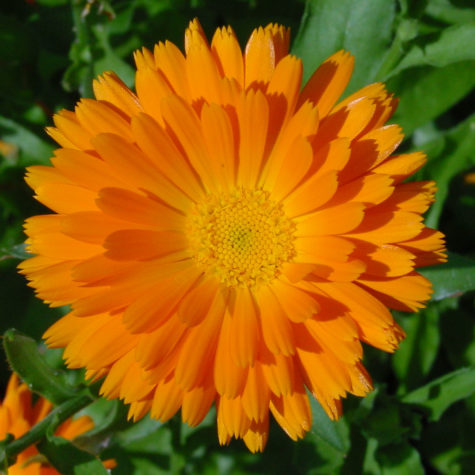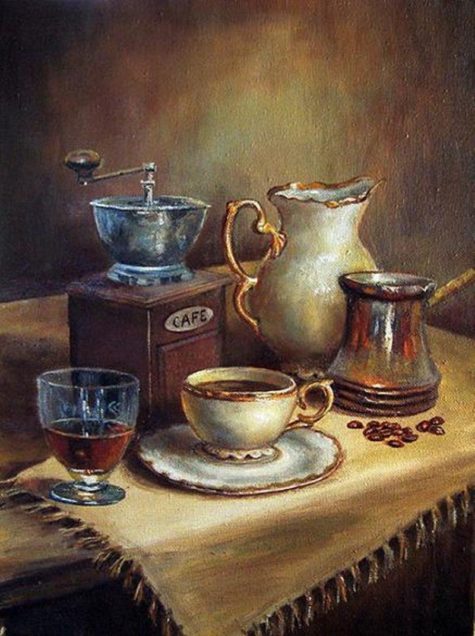shirleytwofeathers
- Ruler: Venus
- Type: Baked good
- Magickal form: Various fillings
Originating in ancient Greece and Rome, pies are associated with happiness, love, and wholeness. Eat cherry pie to increase self-confidence and find self-love. All fruit pies invoke love when shared with another. Meat pies create fillings of security. Place your thumb in a pie and make a wish, it might come true.
Mince pie magick and lore:
Mince pies (sometimes known as mince tarts) are a popular part of Christmas. Most people think they will gain a month of good luck for every mince pie they eat during the Christmas season, as long as a different person makes each pie. One hundred years ago, the tradition was that each pie had to be eaten at a different person’s house, and they had to be consumed between December 25 and January 6. This gave you twelve days in which to eat enough pies to guarantee a year of good luck.
The mincemeat mixture should only be stirred in a clockwise direction. To stir it anticlockwise is to bring bad luck for the coming year. A wish should be made whilst eating your first mince pie of the festive season.
Pies and Their Magickal Qualities:
- Apple pie: Love, Healing, Peace
- Banana cream pie: Money
- Blackberry pie: Money, Sex
- Chocolate cream pie: Money, Love
- Cherry pie: Confidence, Self esteem, Love
- Lime pie: Love, Purification
- Lemon pie: Purification, Love
- Mince pie: Luck, Money (always make a wish when eating a mince pie)
- Pecan pie: Money
- Pineapple pie: Love, Healing, Money, Protection
- Pumpkin pie: Money, Healing
- Raspberry pie: Happiness, Love, Protection
- Rhubarb pie: Protection, Love
- Square sweet pies: Prosperity
- Strawberry pie: Love
From: Encyclopedia of Magickal Ingredients and other sources
Crossroad is a symbolic term denoting the union and joining of paths. The association of the crossroad with Witchcraft goes back to ancient Greek and Roman times. Classically the crossroad symbolizes a joining of three roads, the balance of opposites, and the meeting of time and space.
In the Aegean/Mediterranean region crossroads were sacred to Hecate, Triformis, and Diana. Ovid, an ancient Roman writer, speaks of Hecate as having three faces with which to guard the crossroads as they branched out. Verro, another ancient writer, equated Diana with Hecate and stated the images of Diana were stationed at the crossroads. Other writers of the period called this goddess Artemis-Hekate, and attributed the mother goddess aspect to her.
The crossroads are likewise associated with the ancestral spirits called Lasa or Lares. These beings were originally thought to be spirits of the forests and meadows, the fairy folk, and spirits of Nature. With development these spirits became associated with the cultivated fields, and eventually the Lara became protectors of the family and home, and associated with the hearth.
Also, in the archaic Roman religion small towers were constructed at crossroads, and an altar was placed before them upon which offerings were laid. Such towers were associated with Nature spirit worship and demarcation. Possibly this may be the foundation of the concept of Watchtowers within modern Witchcraft.
Since classical times the crossroad has been a favored place for Witches to gather because of its link to Nature spirits and the moon goddess. When the symbolic crossroads were Christianized they became symbols of dread. Crossroads become the construction sites for gallows, and suspended cages that contained bodies of criminals. Also, suicide victims, who were not permitted burial in hallowed churchyards, were frequently buried near a crossroad. Then too, the Judaic-Christian Devil was said to hover near crossroads. All of this, of course, helped to defile the sacred grounds where Witches gathered.
Source: The Mystica
- Ruler: Elegua, Ganesh, Squat
- Type: Food
- Magickal Properties: Offerings to remove obstacles, appease hungry ghosts, sweeten the path.
The concept of “trick or treat” is based on the idea of appeasing ghosts and spirits with candies and sweets. Chocolate, sugar, candy, honey and other natural sweets have always been associated with love and can work wonders in love magick.
Specific sweets make quite an impression on certain deities. Ellegua or Legba, the Yoruban god of the crossroads, loves striped peppermints, caramels, and coconut or rum flavored candies. Leave them in multiples of three in a crossroads and ask him to clear your path of obstacles.
The Hindu god Ganesh, remover of obstacles, is fond of old fashioned milk candies and will remove blocks in exchange for them. This is best accomplished with a small altar, and the daily recitation of his mantra. “Om Gum Ganapataye Namaha,” to go along with the offerings.
The modern urban goddess Squat rules parking spaces. She’ll get you a legal one if you chant, “Squat, Squat please give me a spot,” but she expects to be rewarded with a piece of chocolate left at the curbside front wheel. Without this sweet offering she may send a tow truck after your car.
Candy can also be left in graveyards when appealing to the spirits of the dead for aid, left on the doorstep of a business when applying for a job to “sweeten the proposal,” or placed in a bowl in the lobby of a business to attract happy customers.
Candy can also be charged with a specific intent and then eaten to internalize the magick. The basic method is rather simple. First, gather the candy that you want to use for your spells. Place them on your altar. Now relax and visualize. Imagine the energy associated with your spell going into the appropriate candy.
- For example:
If you have a piece of pineapple flavored candy that you wanted to use in a money spell for a raise in your allowance, visualize “money energy” filling up that piece of candy. Visualize yourself as having the extra money you needed. How will you feel? What will you do? imagine all these images filling up your pineapple candy.
Once you have your candy charged, simply wait until you feel that you need to release the magick. When that time comes, pop the charged piece of candy in your mouth. Savor the taste of the candy as you visualize releasing the energy into the universe to fulfill your intent. You’ll be casting powerful spells, and all anyone will notice is someone enjoying a piece of candy!
Different flavors of candy have a variety of magickal influences:
- Apple: love, healing
- Banana: prosperity
- Blueberry: Protection
- Cherry: Divination
- Chocolate: Intuition
- Clove: Protection and love
- Coconut: Protection
- Coffee: success, energy
- Grape: mental powers and money
- Horehound: (cough drops) mental ability
- Lemon: purification, friendships, longevity
- Licorice: love, fidelity
- Marshmallow: health, love, protection
- Mints: learning and memory
- Orange: love, money, divination
- Pineapple: luck, money
- Raspberry: love, protection
- Watermelon: health, psychic ability.
Making a candy good luck charm:
Light a candle, and put the candies in a pile. Make a triangle with your index finger and thumb of both hands, and them in a deosil (clockwise) direction over the candies while chanting:
Charmed are these candy treats.
Good fortune to all I merry meet!
Then give out the candies to friends and family and three people you don’t know.
A very simple alternative is as follows:
Put the candy in your hand and point at it with your index finger while you say: “Ordinary candy turn into lucky candy.” Then devour it.
Peppermint Candy Healing Charm
To empower your child to heal her own minor complaint such as a headache or tummy ache, give her a peppermint. Have her hold it in both hands and imagine that it’s filled with very bright, golden white light like the sun. Explain that this light has healing properties and knows exactly what to do to help her feel better. Then instruct her to let the candy dissolve in her mouth, describing how her body will absorb the healing light along with the candy.
Collected from various sources
- Ruler: Zeus, Obatala, Ra, Bast, solar deities
- Type: Plant
- Magickal form: oil, bark, branch, flower
- Other names: Cassie Flower, Catechu, Egyptian Thorn, Gum Arabic, Cape Gum
- Basic powers: Protection, Clairvoyance
Acacia is much revered in religious and magickal practice as an emblem of immortality and of initation, in the sense that initiation is symbolic of resurrection. The ancient Egyptians made funeral wreaths of Acacia leaves and the Hebrews planted a sprig of evergreen Acacia to mark the grave of a departed friend.
Carry the wood as a protective amulet.
Acacia wood is the Biblical shittim-wood from which Noah’s Ark and the Tabernacle and Altar wer made. Jewish legend tells us that the Burning Bus of Moses was an Acacia. Christian lore links an Acacia tree with the Cross and its spiny branches with the Crown of Thorns. The sap of some spiny Acacia species yields Gum Arabic, used as a binding agent.
Sitting under an acacia tree or burning the dried flowers brings wisdom and insight. The oil extracted from the plant is considered holy and used for purification and anointing. It is especially powerful when attempting to contact the dead and should be rubbed into white candles and not worn on the body while attempting such work. For personal anointing, mix with other oils (like musk or camellia) to cut and then it is said to bring happiness.
- To contact the dead:
Dip acacia leaves in holy water and sprinkle an altar with the water, or burn Acacia as incense to communicate with or to memorialize the dead.
- To open the mind to visions:
Acacia leaves are burned on charcoal to induce spiritual phenomena and develop personal psychic power; adding Frankincense and Myrrh is used to intensify the effect.
Mace is a spice made from the waxy red covering which covers nutmeg seeds. It is completely different from the protective pepper spray with the same name.
Mace is produced by, Myristica franrans, a member of the mayriticaceae family. This plant, native to Indonesia, grows into a tropical evergreen tree of up to thirty feet tall.
Mace is actually the aril of the nutmeg seed shell. It is removed from the shell. The broken part of it is generally known as blades. Nutmeg and mace are treated separately. But the history of both of them is related to each other. The color of mace can be different from one to another place. The mace from West Indies is generally yellowish brown. On the other side mace from East Indian nutmegs are actually orange when dried. Mace is sweet and fragrant but quite stronger than nutmeg. The flavor of mace is aromatic, sharp and warm and is sweeter than nutmeg.
Magickal Uses for Mace:
- Planet: Mercury
- Element: Air
- Magickal influences: Psychic awareness
Mace emits a powerful, spicy odor and is well known from its use in cooking. It smells a lot like nutmeg, which makes complete sense, since mace is actually the covering of the nutmeg nut. Because it has this aspect of being like a peel or rind, it is usually considered ruled by Mercury according to sources like Agrippa, even though its scent is warmish, reminding one more of Jupiter or Sun. But Mercury works well for just about any magical purpose, since Mercury rules magic itself.
It is designated as the primary incense in Grimoirium Verum, in particular for censing the Circle. Mace has a more complex scent than nutmeg, perhaps not as flowery: a blend of spice, bitterness, clove, and pine. Mace is one of the winter spices in Wassail bowl, along with cardamom, clove, nutmeg, ginger, cinnamon, and coriander, and is often, along with them, used in prosperity charms. The nice thing about blade mace is that you can be sure there is nothing in it but mace.
To enhance psychic awareness, sit comfortably and inhale the aroma, visualizing it penetrating your conscious mind, relaxing its hold and traveling to your deep consciousness. Psychic awareness will blossom.
Sprinkle some outside doors and windows for protection. Mace also stimulates brain activity and creativity. Smell the spice for inspiration, or mix with success formulas and burn as incense. You can also dust your hands with the powder.
Mace at one time found use in a money-drawing douche among prostitutes, who mixed the powder with distilled vinegar and water. It was said that a man whose member came in contact with a woman who had thus “dressed her pussy” would be under her control, and would seek her out and pay her well for repeated trysts.
The money drawing powers of mace makes sense because mace grows attached to the nutmeg, itself a celebrated money drawing spice.
- Latin Name: Calendula officinalis
- Planet: Sun
- Element: Fire
- Part Used: Fresh flowers
- Magickal Influences: Health, Psychic dreams, Comfort
The calendula flower is often associated with the month of October. This flower’s name stems from the Latin calends, the word denoting the first day of each month (and the origin of the English “calendar”). It was so called because the yellow and orange flowers were said to be in bloom on every calends throughout the year in ancient Rome.
This flower is often confused with the Mexican marigold Tagetes. There is a resemblance, but the two flowers have vastly different energies.
The calendula, prized in medicinal herbalism, also has magickal aromatherapy applications. The scent of the flowers strengthens and maintains health. At one time in the past, fresh calendula blossoms were sniffed to sharpen the eyesight. This was probably pure sympathetic magick, for the flowers resemble eyes.
Sniff the aroma of calendula at night just before going to bed to produce psychic dreams. For centuries, the blooms have been sniffed to comfort the weary and distressed.
From: Magical Aromatherapy
Animal magic is use of an animal for its symbolism and energies. Animals can also be animal spirit guides. Similar to spirit guides, they are used for their strengths, skills, and guidance. Using animal symbols in your spell work can be very effective. They can be used to represent persons or situations, and/or to add strength and ability to what it is you are working to achieve.
Here is a listing of many common animals and the general properties associated with them. You can also use this list as an aid when deciphering dreams, omens, shapes in tea leaves, etc.
- Alligator : aggression, survival, adaptability
- Ant : team player, worker
- Armadillo : active, nocturnal, protection
- Bat : guardian of the night, cleaner
- Bear : power, adaptability
- Bear Paw : strength, mobility
- Beaver : builder, gatherer
- Bobcat : fierce, loner, intensity
- Buffalo : sacredness, life builder
- Bull : strength, warning
- Butterfly : metamorphosis, carefree, transformer
- Camel : weary, enduring
- Cat : independence, grace, healing
- Cougar : leadership, courage
- Cow : patience, stoicism
- Coyote : prankster, insight, playful
- Crane : solitude, independence
- Deer : love, gentleness, kindness
- Dog : loyalty, protection
- Dolphin : kindness, play, bridge man to ocean
- Dragonfly : flighty, carefree
- Eagle : divine spirit, connection to creator
- Elephant : long life, self : preservation
- Elk : strength, agility, freedom
- Fox : cunning, provider, intelligence
- Frog : connection with water element
- Giraffe : watchfulness, mobility
- Goat : stubborn, omnivorous
- Gorilla : brute strength, adaptibility
- Goose : faithful, communicative, traveler
- Grizzly Bear : hunter, nature’s pharmacist
- Hawk : messenger, stopper of time
- Hippo : linking water and earth, survival
- Horse : stamina, mobility, strength
- Hummingbird : messenger, stopper of time
- Kangaroo : feisty, funloving
- Lion : power, strength, respect
- Lizard : conservation, agility
- Loon : solitude, song, romance
- Manatee : peaceable, unassuming
- Monkey : playfulness, agility
- Moose : headstrong, unstoppable, longevity
- Mouse : timid, secretive, sneaky
- Orca : focus, power
- Ostrich : fickle, fast moving
- Otter : laughter, curiosity, truth, patience
- Owl : wisdom, perseverance
- Panda : playful, kindness
- Pelican : ever watchful, grace
- Penguin : playful, loving
- Pheasant : confidence, attraction, perseverance
- Pig : intelligence, hunger
- Polar Bear : fearlessness, power
- Quail : sacred spiral, ceremonial, Holy
- Rabbit : alertness, resourceful
- Raccoon : bandit, shy, determination
- Ram : new beginning, teacher, hoarder
- Raven : trickster, mischievous
- Rhino : durability, strength
- Road Runner : speed, agility, cleverness
- Salmon : instinct, persistence, determination
- Seahorse : confidence, grace
- Shark : hunter, survival
- Skunk : wary, conspicuous, intense
- Snake : shrewdness, transformation
- Spider : creative, pattern of life
- Squirrel : trusting, innocence
- Swan : grace, balance, festive
- Turkey : smart, elusive
- Turtle : self : contained creative source
- Water Buffalo : enormous strength, hard working
- Whale : wisdom, power, cleanser
- Wolf : loyalty, success, perseverance
- Wolf Paw : freedom, success, guidance
- Zebra : family : oriented, alert
- ACACIA: divination
- ADDER”S TONGUE: divination
- ANGELICA: exorcism, healing, and protection against evil influences.
- AVENS: soul purification.
- BASIL: exorcism, love spells and protection against evil influences.
- BAY: clairvoyance, healing, good luck and protection against evil influences.
- BERGAMOT: prosperity.
- CAMPHOR: divination.
- CATNIP: love spells.
- CARNATION: psychic healing.
- CEDAR: healing, prosperity and sanctification.
- CHAMOMILE: sleep potions.
- CINNAMON: clairvoyance, healing and love spells.
- CINQUEFOIL: prosperity.
- CLOVES: divination, exorcism, love and spiritual purification.
- CLOVER: anti-sorcery, counterspells and protection against evil influences.
- CORIANDER: love spells.
- DILL: anti-sorcery and protection against evil influences.
- DRAGON’S BLOOD: exorcism and love spells.
- ELDER: aphrodisiac, love spells and prosperity.
- FENNEL: healing and purification.
- FERN: exorcism and spells to attract rain.
- FRANKINCENSE: consecration, divination, exorcism, healing, love spells and spiritual purification.
- GARDENIA: healing and love spells.
- GARLIC: exorcism, protection against evil influences and purification.
- GINGER: aphrodisiacs and love spells.
- HAWTHORNE FLOWERS: clairvoyance and divination.
- HAZEL: aphrodisiacs and love spells.
- HONEYSUCKLE: divination.
- HOPS: healing and sleep potions.
- JASMINE: aphrodisiacs and love spells.
- JUNIPER: aphrodisiacs, exorcism, healing, love spells and protection against evil influences.
- LAVENDER: aphrodisiacs and love spells.
- LEMON BALM: healing and love spells.
- LEMON GRASS: divination.
- LILAC: exorcism.
- LOVAGE: aphrodisiacs and love spells.
- MACE: divination.
- MALLOW: exorcism.
- MANDRAKE ROOT: aphrodisiac, cursing enemies, love spells, protection against evil influences and spells to increase psychic powers.
- MARJORAM: prophetic dreams and protection against evil influences.
- MINT: exorcism and healing.
- MUGWORT: astral projection, clairvoyance, divination, prophetic dreams, and Spells to increase psychic powers.
- MYRRH:consecration, exorcism, healing and meditation.
- MYRTLE: sleep potions.
- NUTMEG: divination and healing.
- ORRIS ROOT: clairvoyance and divination.
- PASSION FLOWER: sleep potions.
- PATCHOULI: invocation of elemental powers.
- PEONY ROOT: anti-sorcery and protection against evil influences.
- PINE: prosperity.
- ROSE: divination, healing and love spells.
- ROSEMARY: counterspells, healing, love spells and purification.
- RUE: exorcism and hexing of enemies.
- SAFFRON: love spells.
- SANDALWOOD: consecration, healing and protecting against evil influences.
- SASSAFRASS: prosperity.
- SERPENTARIA ROOT: aphrodisiacs and love spells.
- SOLOMON’S SEAL: exorcism.
- THISTLE: exorcism.
- THYME: divination and healing.
- TONKA: love spells and prosperity.
- VERVAIN: anti-sorcery, astral projection and sleep potions.
- VIOLET: Healing and love spells.
- WILLOW: healing.
- WOOD ALOE: prosperity.
- WOODRUFF: prosperity.
- WORMWOOD: clairvoyance, divination and good luck.
- YARROW: divination, exorcism, love spells, prophetic dreams,and spells to increases psychic powers.
- YERBA SANTA: healing.
The Poplar or Aspen is the sacred Tree of the Fall Equinox – (Aprox. September 22).
There is a bit of confusion about poplar, aspen, and cottonwood trees. The tree referred to here is the genus “populus” which includes true poplars, as well as related trees such as cottonwood and aspen).
Here’s a quick list:
- Balsam Poplar (Populus balsamifera)
- Eastern Cottonwood (Populus deltoides)
- Bigtooth Aspen (Populus grandidentata)
- Black Poplar (Populus nigra)
- European Aspen (Populus tremula)
- Quaking Aspen (Populus tremuloides)
- Black Cottonwood (Populus trichocarpa)
As far as I could discover, the Aspen and Poplar tree magickal lore overlap, and can be used interchangeably, unless otherwise indicated. The lore does not refer to the Yellow Poplar (Liriodendron tulipifera), or Balm of Gilead (Populus candicans) which have different attributes and magickal qualities
- Celtic name: Eadha (pronounced: “Eh’ uh”).
- Folk or Common names: All Poplar – Popple, Alamo, Aspen; Trembling Poplar – American Aspen, White Poplar, or Quaking Aspen; Balm of Gilead – bombagillia.
Magickal Usage:
- Ruler: Saturn
- Type: Plant
- Magickal form: Buds
Carry poplar buds with you when seeking employment. Crush and add them to traditional money incense when you work on commission and need to attract more funds. The poplar buds may also be added to divination blends and make a great ingredient for psychics wishing to attract more business, as well as improving their powers.
The Poplar’s ability to resist and to shield, its association with speech, language and the Winds indicates an ability to endure and conquer. The Poplar is known as the “Tree that Transcends Fear”. Poplars symbolize the magick of joy, the aging of the year, resurrection and hope – and are connected to the Otherworld. Poplar can be used in magick done for success, passage and transformation, Hope, rebirth, divinations, shielding, endurance, agility in speech and language, protection, and love – and as an aid in astral projection.
Poplar can be used in protection charms of all kinds. Poplar is a good wood to burn in balefires and ritual fires since it offers protection. Shields can be made of Poplar since the wood is thought to offer protection from injury or death. Carrying Poplar helps to overcome the urge to give way under the burden of worldly pressures, and aids in determination. Poplar buds can also be carried to attract money and can be burned as an incense to create financial security.
Siberian reindeer-hunting cultures carved small goddess statues of Poplar (Aspen) wood. Groats and fat were then offered to the figures with this prayer:
“Help us to keep healthy!
Help us to hunt much game!”
Poplar buds are also sometimes added to flying ointments and was also used in astral travel. A medieval recipe for a flying ointment called for Cinquefoil, Poplar leaves, soot and bat’s blood obtained at the wake of the new moon.
The trembling leaves of the Poplar tree can be ‘read’ to divine messages from the God and Goddess, and also from spirits that drift into woods. The Poplar is the sacred World Tree of the Lakota nation. For the sun dance ceremony, a Poplar is carefully cut and lowered, then is re-erected in the center of the dance circle. While being carried the Poplar must never touch the ground. Green branches, a buffalo skull and eagle feathers were used to decorate the Poplar for this ceremony.
Aspen Lore:
A country name for the aspen is the Shivver-tree, a name which in some districts is also given to the poplar. The leaves of both trees tremble at the slightest stirring of air, so that they seem to move without ceasing when all around is still. Because of this, both trees were formerly credited with the power to cure agues and fevers.
A very old magical tradition held that ailments could most efficaciously be treated by something that resembled their effects; and since ague causes the patient to shake and tremble, he was likely to be healed by the shaking tree.
In his Folk-Lore of the Northern Counties, William Henderson relates the story of a Lincolnshire girl who was thus cured of ague. She was advised to pin a lock of her hair to an aspen, saying as she did so:
“Aspen tree, aspen tree,
I prithee to shake and shiver
Instead of me.”
As was usual in such charms, her journey home had then to be made in complete silence, otherwise the magic would not work. She followed the advice given, and many years later, when she was an old woman, she told Henderson’s informant that she had never been troubled with ague again.
Another method was to bore a small hole in the tree trunk, insert the patient’s nail parings, and close the hole securely. As the bark grew once more over the opening, so the disease would disappear.
Two widespread legends are told to account for the aspen’s trembling. One is that it was condemned to shiver thus for evermore because it was the only tree that would not bow down to Our Lord when He passed through the forest. The other is that it shudders perpetually with horror because its wood was used to make the Cross on Calvary.
Poplar Lore:
 The poplar shares with the aspen the country name of Shivver-tree because like those of the latter, its leaves tremble. It also shares, and for the same reason, the aspen’s power to cure agues and fevers. R.M. Heanley records a Lincolnshire charm in which the patient cut off a lock of his hair and wrapped round a black poplar branch, saying as he did so:
The poplar shares with the aspen the country name of Shivver-tree because like those of the latter, its leaves tremble. It also shares, and for the same reason, the aspen’s power to cure agues and fevers. R.M. Heanley records a Lincolnshire charm in which the patient cut off a lock of his hair and wrapped round a black poplar branch, saying as he did so:
When Christ our Lord was on the Cross,
Then didst thou sadly shivver and toss.
My aches and pains thou now must take,
Instead of me I bid thee shake.
He then had to go straight home, speaking to no one on the way, after which he would be free from ague forever. Heanley adds that some people considered it necessary to fast for twelve hours before attempting this charm.
The constant shaking of the poplar is often accounted for by the legend that its wood was used in the construction of the Cross. Medieval Legends of Christ (1934), mentions two explanatory legends. One is that it was under a poplar that Our Lord prayed during His agony in the Garden of Gethsemane, and that the tree has trembled in sympathy ever since. The other is that it was cursed because, alone among the trees, it refused to mourn at the Crucifixion, saying that Christ died for sinners, “but I am innocent, and His suffering is no concern of mine.”
Poplar leaves were supposed to be one of the ingredients of the witches’ flying ointments.
Magical History and Associations:
In Gaelic tongue the tree was called Peble and Pophuil in the celtic way. Poplar is generally a plant of Jupiter, Saturn and the Sun and is associated with the element of water. Its color is rufous (red) and the bird associated with Poplar is the Whistling Swan. The stones associated with Poplar are Amber, Citrine Quartz, Sapphire and Swan Fluorite. The Anglo-Saxon rune poem seems to refer to the Poplar as being associated with the rune “berkano”.
Heracles wore a crown of Poplar leaves in triumph after killing the giant Cacus (the evil one) and retrieving Cerberus from Hades. The upper surface of the Poplar leaves was thus darkened from Hades’ smokey fumes. Poplar trees are sacred to the Mesopotamian goddess Ua-Ildak. The Grass King of Grossvargula, who was seen as having fertilizing powers, went on horseback wearing a pyramid of Poplar branches and a crown. He led a procession of young men about the town and was then stripped of his branches beneath the Silver Lindens of Sommerberg.
Poplar (Aspen) is said to be the tree of the Autumn Equinox and of old age, and is known as the shield makers’ tree. The Black Poplar was a funeral tree sacred to Hecate as death goddess, to Egeria, and to Mother Earth. Plato makes a reference to the use of Black Poplar and Silver Fir as an aid in divination. The Silver Fir standing for hope assured and the Black Poplar for loss of hope. The Grove of Persephone in the Far West contained Black Poplars and old Willows.
In ancient Ireland, the coffin makers measuring rod was made of Aspen, apparently to remind the dead that this was not the end. In Christian lore, the quaking Poplar (Aspen) was used to construct Christ’s cross, and the leaves of the tree quiver when they remember this fact.
Herbal usage:
Poplar can be used as a tonic, chiefly used in treating fevers. The infusion has been found helpful in treating chronic diarrhea. The sap collected from the buds can be used to make a healing ointment and can be used as an external application in bruises, swellings, and some skin diseases. Teas can be made from the Poplar buds and are useful in helping treat arthritis and rheumatism.
Source: Dutchie.org
- Provides peace of mind and grounding.
- Helps to dispel nightmares, negative thoughts, and overcome blockages and unhealthy emotions. It’s great for protection and getting rid of all kinds of nasties.
- Coffee is a stimulant and can be used to give spells, potions and charms an extra kick, or speed things up.
- Coffee grounds can be used in divination and read like tea leaves.
- It is considered excellent for curse breaking.
- It can be used as an offering to deities, entities, and ancestors.
- Some sources suggest it can be used for compulsion, and encouraging others to be more persuasive towards you. This is most effective when the coffee is served to the target.
Bubbles appearing in a cup of coffee are a sign of good luck, especially if they are caught with a spoon and eaten. This is hard to do, as the bubbles disappear quickly. However, anyone who achieves it will receive a surprise windfall.
The movement of any bubbles on the surface of a cup of coffee can be interpreted. It is a sign of money ahead if they move toward the drinker. Unfortunately, it means the opposite if they float away from the drinker.
It is bad luck to stir coffee with a fork.
Muslims believe the archangel Gabriel invented coffee. One day when Mohammed was extremely tired, Gabriel brought him a cup of coffee. This invigorated Mohammed so much that after drinking it he defeated forty horsemen and satisfied forty women.
Borrowed from: The Prosperity Project and The Encyclopedia of Superstitions



















